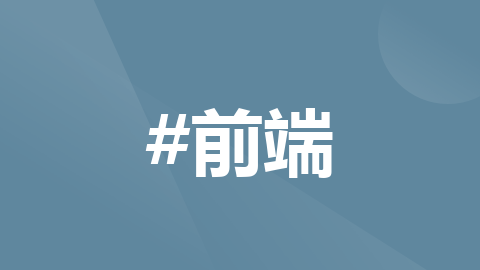
vue项目中公共 js 文件的封装export
我们一般的做法是在 src 文件夹下 新建一个 util 文件夹,util 文件夹里面存放一个 utils.js 文件,这个 js 文件中存放公共的函数。下面讲解大概三种用法。一、对 utils.js 通过 export default 默认导出为对象utils.js 内容://import {Message, MessageBox} from 'element-ui' // elementui
·
我们一般的做法是在 src 文件夹下 新建一个 util 文件夹,util 文件夹里面存放一个 utils.js 文件,这个 js 文件中存放公共的函数。下面讲解大概三种用法。
一、对 utils.js 通过 export default 默认导出为对象
utils.js 内容:
//import {Message, MessageBox} from 'element-ui' // elementui 引入(这里根据个人需求决定是否需要导入)
export default {
//等同于test: function ()...
test(x){
console.log(x)
},
hello(){
console.log("Hello World!")
}
}
在main.js中引入:
//公共js函数
import utils from "@/util/utils"; // @ 默认的是 src 文件夹,后面省略了utils.js 后面的后缀名js
Vue.prototype.$utils = utils; //直接定义在vue的原型上面
这样在组件中,就可以直接拿来用了,写法为:this.$utils.hello( )
二、对 utils 通过 export 默认导出
utils.js 内容:
function test(x){
console.log(x)
}
function hello(){
console.log("Hello World!")
}
export default{ //注意这里是default
test,
hello
}
在组件中就可以通过 import utils from ‘@/util/utils.js’ 引入,用法为: utils.hello( )
三、对 utils.js 通过 export 普通导出
utils.js 内容:
export function test(x){
console.log(x)
}
export function hello(){
console.log("Hello World!")
}
然后在组件中通过 import { test, hello } from ‘@/util/utils.js’ 引入(这里可以根据自己的需求,用到哪些函数,就引入哪些函数),用法为 test( )
四、导出
export const menu1 = [
{ label: '首页', id: 1 }
]
export const menu2 = [
{ label: '用户管理', id: 8 },
{ label: '角色管理', id: 9 }
]
//调用
import { menu1, menu2 } from "@/assets/constants/menus";
//
let nv = [...menu1, ...menu2].find(({ label }) => label == item.name);
五、vue3中使用
const onShowDeleteConfirmMsg = (msg, config = {}) => {
return ElMessageBox.confirm(msg, '提示', {
confirmButtonText: '确定',
cancelButtonText: '取消',
type: 'warning',
...config
})
}
export { onShowMessage, onShowMessageBox, onShowDeleteConfirmMsg }
import { onShowMessage } from '@/utils/showMessage'
const addParamFun = async () => {
const params = { ...state.accessForm }
try {
const res = await creatAccess(params)
if (res.data) {
state.loading = false
onShowMessage({
message: '新增入网设备成功',
type: 'success'
})
ctx.emit('closeDialog', { reload: true })
}
state.loading = false
} catch {
state.loading = false
}
}
<template>
<div class="tree-box mt-10">
<el-tree default-expand-all node-key="id" highlight-current :props="{ children: 'children', label: 'name' }" :data="treeDataList" :expand-on-click-node="false" @current-change="currentChange">
<template #default="{ data }">
<div class="custom-tree-node">
<label>{{ data.name }}</label>
<el-tag v-if="data.labelItemId && data.labelName" :style="getTagStyle(data.labelColor)" size="small">{{ data.labelName }}</el-tag>
</div>
</template>
</el-tree>
</div>
</template>
<script>
import { ref, reactive, toRefs, onMounted, watch } from 'vue'
import { getTagStyle } from '@/utils/helper'
export default {
name: 'LedgerTree',
props: {
treeData: {
type: Array
}
},
setup(props, ctx) {
const tabList = [
{ name: 'department', label: '组织部门' },
{ name: 'device', label: '设备类型' },
{ name: 'area', label: '区域位置' }
]
const activeTabName = ref('department')
const state = reactive({
//左侧树状数据
treeDataList: []
})
watch(
() => props.treeData,
(newVla, oldVal) => {
state.treeDataList = props.treeData.length > 0 ? props.treeData : []
},
{
immediate: true
}
)
//节点改变
const currentChange = treeNode => {
ctx.emit('changeNode', treeNode)
}
onMounted(() => {})
return {
activeTabName,
...toRefs(state),
tabList,
getTagStyle,
currentChange
}
}
}
</script>
<style lang="scss" scoped>
.tree-box {
width: 100%;
min-width: 280px;
height: 100%;
}
.el-tree,
.ztree {
height: 100%;
overflow-y: auto;
}
.custom-tree-node {
width: 100%;
text-align: left;
&:hover {
cursor: pointer;
}
label:hover {
cursor: pointer;
}
}
</style>
更多推荐
 已为社区贡献3条内容
已为社区贡献3条内容







所有评论(0)